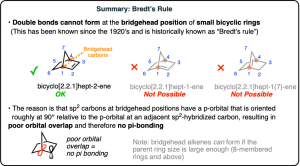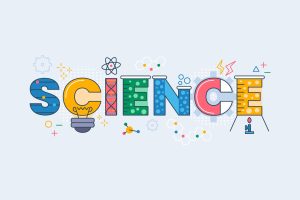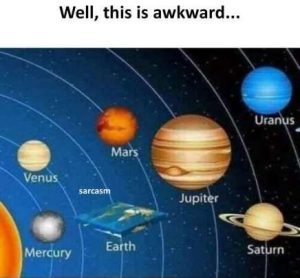Manabendra Nath Bhattacharjee
Science is fascinating, amazing and hence is a beauty in its true meaning. It exposes us to the world of the unknown, makes us innovate and hence leads to new discoveries and inventions. More important is that Science is the fundamental element for the progress of civilisation making our lives comfortable and also reachable to every part of the world, even beyond.
Why is it so? Why should we pronounce science as the root cause of progress of civilisation to Science? It is because Science teaches us to question and hence thinking further, beyond the usual as well as traditional concepts. Elders or peers say something and you accept that – that is thoroughly against inculcating a scientific mindset. Any emotional exploration goes against the basic tenets of science. Established doctrines have to be challenged whenever there are incoherencies in traditional beliefs and practices. One should not accept intimidation or suffer from fear in putting forward a question. Starting from Galileo, it is because the scientists chose to question the irrational beliefs that society has progressed to the extent that we are taking benefits.
Consequently, science does not hesitate to question its own discoveries and continues to develop this further, and even rejecting a particular theory if found that is having loopholes at later stages. This comes from thinking totally differently or anew. To err is human, they say. Hence, one theory accepted at a particular time based on available facts may be proved wrong or different subsequently. Science accepts this and there lies the beauty of science.
So-called established doctrines or traditional practices are more often than not fictions of imaginations of certain people under the influence of religious beliefs or out of fear. Belief does not require proof, one may believe in anything. Trust, on the other hand, is developed on the basis of facts and proof. This is the beginning of stepping into the fascinating world of Science. Thus, science questions its own findings leading to improving the known, and then developing it further and even rejecting some inventions/discoveries if new facts appear different. Disbelief and courage to question – these are the fundamental elements of the scientific mindset.
Why so many words in praise of science; one may attribute the above sentences as propaganda or marketing strategy. Yes, these are motivational but not motivated. There is a recent finding which is the basis of the above long introduction. Researchers, particularly those in the area of chemical science, are aware of new research findings but this news has gone as simply as another scientific work. Truly, there is a bigger message in this new finding.
Recently the scientists working in the Department of Chemistry and Biochemistry, University of California, Los Angeles, have proved a basic concept in chemistry as wrong, and hence opening up new horizons of research in organic chemistry. Yes, a celebrated rule or theory or concept that existed for 100 years has been challenged with facts and figures. The Bredt’s rule is an organic chemistry principle that states that double bonds cannot form at certain positions in organic molecules has come under scanner and is set to open up new vistas in chemical research.
Bredt’s rule – What it states?
Double bonds cannot form at the bridgehead position of a bridged bicyclic molecule, which is where the two rings of the molecule join together. It was proposed by organic chemist Julius Bredt in 1924.
Why is it important
The rule is important because placing a double bond at the bridgehead position would cause the molecule to twist into an unstable, strained 3D shape.
How it has been challenged
In 2024, UCLA chemists published a paper in the journal Science that invalidated Bredt’s rule. The paper showed how to create molecules that violate the rule, called anti-Bredt olefins (ABOs).
In organic chemistry, an anti-Bredt molecule is a bridged molecule with a double bond at the bridgehead. Bredt’s rule is the empirical observation that such molecules only form in large ring systems. For example, two of the following norbornene isomers violate Bredt’s rule, and are too unstable to prepare:


Bridgehead atoms violating Bredt’s rule in red. Let us further elaborate the concept:
The rule is named after Julius Bredt, who first discussed it in 1902 and codified it in 1924.
 However, it was proven false in 2024 by Neil Garg and his team.
However, it was proven false in 2024 by Neil Garg and his team.
Despite Bredt‟s conclusion, many endeavours towards generating ABOs transiently have been made over the past century. These studies confirmed the existence of ABOs but also suggested that the ABOs are often unstable and prone to decomposition. Inspired by the Kobayashi approach toward benzyne and its successful application to other strained intermediates, this group of scientists evaluated silyl(pseudo)halide precursors to a number of different ABOs. Treatment of these precursors with a fluoride source, such as Bu4NF or CsF/Bu4NBr, in the presence of a suitable trapping agent, led to cyclo-adducts indicative of an ABO being generated in situ and undergoing trapping. These trapping experiments proved that ABOs can provide access to structurally complex products, including those that bear functional handles poised for further manipulation. Computational studies further asserted that ABOs have distinct olefinic character and react in a concerted asynchronous cyclo-addition with dienes such anthracene and the point of chirality present in a precursor can be transmitted to deliver point chirality in a cyclo-adduct by way of axially chiral intermediate. These studies further opened up the potential of strategically leveraging the heightened reactivity of geometrically distorted alkenes for broad use in synthesis.

Few elaborations:
Bredt’s Original finding Not Allowed
OH
A carbon double bond cannot occur at the branching position of the carbon bridge (the bridgeheads)
Anti-Bredt Olefins accessed in the present study
CH3 H3C
Br Br
All Allowed
Here lies the beauty of science. It teaches you to question each and everything with an open mind. A theory that existed over a hundred years – most of us grew up learning this – we have solved a number of problems using this theory – is set to be changed now. New Text Books will be written and, who knows, one day in future there will be more to it. Is not science marvellous and a wonder?
Science may be difficult to access nowadays, with much too much information hidden in paid journals that are difficult and costly to obtain. Aside from that, there is the publication process, which is difficult and slow, causing a delay in information delivery. Scientists are also worried about how knowledge is disseminated to the non-scientific public, the public hold onto wholly unscientific notions or have a distorted understanding of how science works.
For example, it is a recurring problem how the celebrities who know nothing about science, health, or nutrition may influence others with their superstitious daily practices, marketing of stones and blatant propaganda in electronic media. Discoveries of science and technology are used to cause most disservice to Science.
Of late, new challenges are emerging in the world in the form of strong socio-political movements, backed by the State power, that seek to oppose any scientific approach, evidence- based reasoning or, indeed, any perspective that acknowledges universal scientific knowledge. Globally, a post-truth culture is spreading, marked by a deliberate spreading of ignorance and an anti-intellectual atmosphere, along with a diminishing trust in science. It is ironic that technology, part of the broad umbrella of science, is being harnessed to support these trends through social media, such that manufactured sentiment, prejudice, false narratives, baseless opinions and conspiracy theories gain acceptance as valid ways of thinking.
To make the problem more critical there are large group scientists who take science only as a career with no respect to knowledge they gather. Many of them indulge in total anti-science activities or lifestyles from the day they retire from services! There are practicing evolutionary biologists who hardly care about evolution – spirituality makes them turn a blind-eye to reality. There are climate scientists who don‟t accept the serious phenomenon of climate change. Then there is a significant group who vouch for “Flat Earth”. They are trying to project our Solar system as:

To conclude this piece of writing, let us remember the great words of famous film director and philosopher Ritwik Ghatak; “Ask question, ask, practice and practice how to question”. How many have watched his celebrated film Jukti Takko Aar Goppo (Reason, Debate and Story). Down the line, the saying goes “And somewhere under some new moon we shall learn that sleeping is not death.” Challenging Reasons, Identities, and Nations should be the motto of the advancing world to move towards further progress to serve humanity. Science leads to liberation and nothing else.
Reference:
L. McDermott, Z. G. Walters, S. A. French, A. M. Clark, J. Ding, A. V. Kelleghan, K. N. Houk and N. K. Garg, Science, 386, 509 (2024) – 1 November, 2024.



